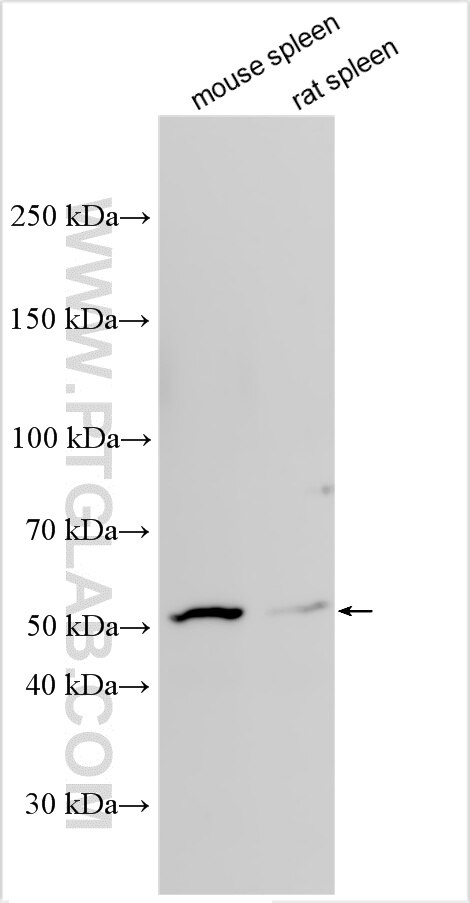Tested Applications
| Positive WB detected in | mouse spleen tissue, bEnd.3 cells, rat spleen tissue |
Recommended dilution
| Application | Dilution |
|---|---|
| Western Blot (WB) | WB : 1:500-1:3000 |
| It is recommended that this reagent should be titrated in each testing system to obtain optimal results. | |
| Sample-dependent, Check data in validation data gallery. | |
Product Information
32649-1-AP targets LYVE1 in WB, ELISA applications and shows reactivity with human, mouse, rat samples.
| Tested Reactivity | human, mouse, rat |
| Host / Isotype | Rabbit / IgG |
| Class | Polyclonal |
| Type | Antibody |
| Immunogen | LYVE1 fusion protein Eg1615 Predict reactive species |
| Full Name | lymphatic vessel endothelial hyaluronan receptor 1 |
| Calculated Molecular Weight | 35kDa |
| Observed Molecular Weight | 55 kDa |
| GenBank Accession Number | NM_006691.4 |
| Gene Symbol | LYVE1 |
| Gene ID (NCBI) | 10894 |
| Conjugate | Unconjugated |
| Form | Liquid |
| Purification Method | Antigen affinity purification |
| UNIPROT ID | Q9Y5Y7 |
| Storage Buffer | PBS with 0.02% sodium azide and 50% glycerol, pH 7.3. |
| Storage Conditions | Store at -20°C. Stable for one year after shipment. Aliquoting is unnecessary for -20oC storage. 20ul sizes contain 0.1% BSA. |
Background Information
LYVE1 is a 322-amino acid type-I integral membrane glycoprotein primarily expressed on lymphatic endothelial cells. LYVE1 is a CD44 homologue. It acts as a receptor and binds to both soluble and immobilized hyaluronan. LYVE1 may function in lymphatic hyaluronan transport and have a role in tumor metastasis.
Protocols
| Product Specific Protocols | |
|---|---|
| WB protocol for LYVE1 antibody 32649-1-AP | Download protocol |
| Standard Protocols | |
|---|---|
| Click here to view our Standard Protocols |





